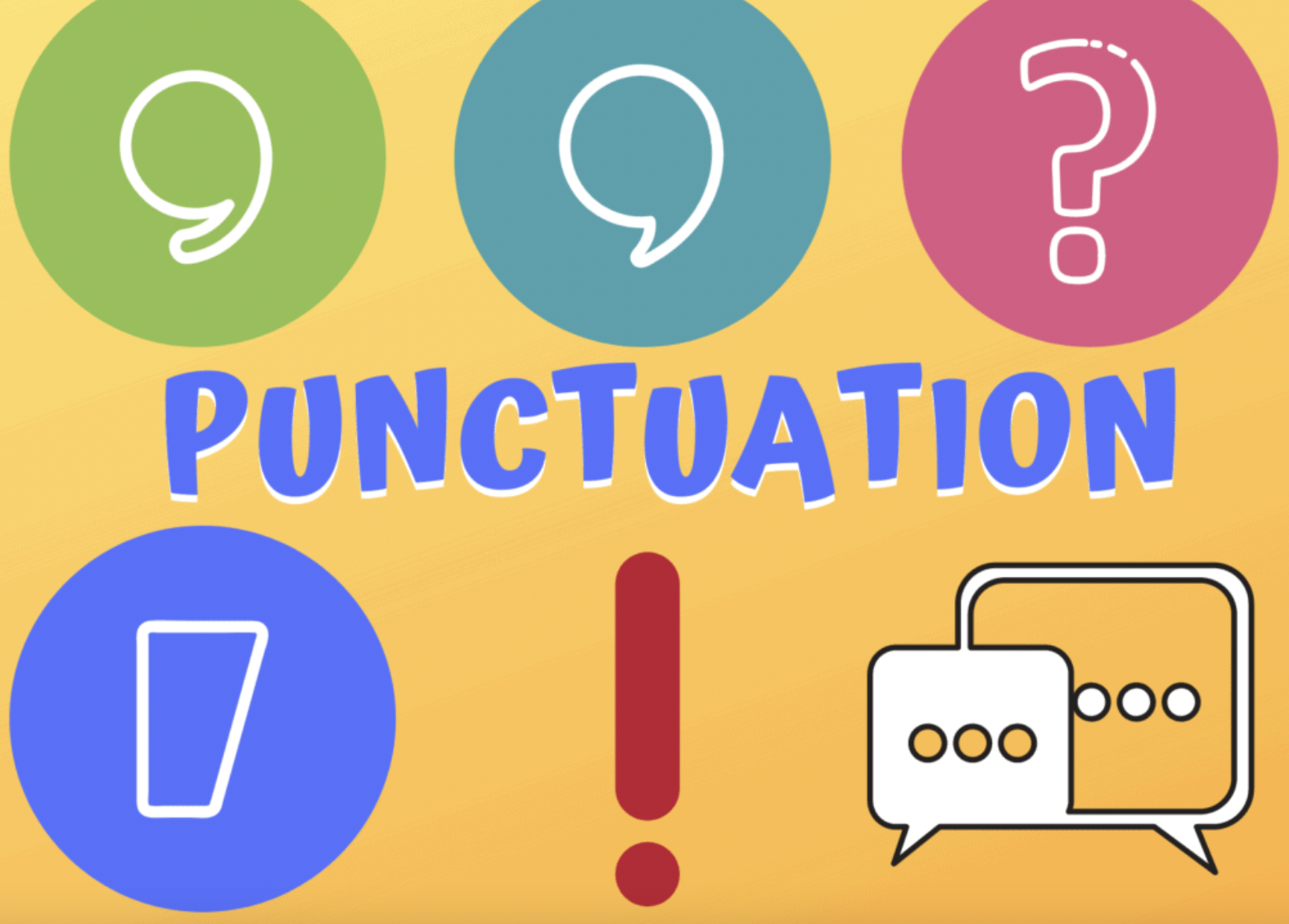- PERIOD or FULL STOP(.)
1) It is used at the end of a declarative or an imperative sentence.
2)It is put with a shortened word like
Mr., Dr., Mrs., st., etc.
Table of Contents
QUESTION MARK or SIGN of INTERROGATION(?)
It is used at the end of an interrogative sentence.
EXCLAMATION MARK(!)
It is used at the end of an exclamatory sentence.
COMMA (,)
1) It is used to set off words such as yes, no, and well when they begin a sentence.
2) It is used to set off the name of a person who is spoken to directly in a sentence.
3) It is used to separate the name of the day from the date, and the date from the year.
4) It is used to separate each noun in a series of three or more nouns.
5) It is put before and when it joins sentences.
POSSESSION MARK or APOSTROPHE or CONTRACTION MARK (‘)
1) It is used to form the possessive singular noun.
2) It is used to form the possessive of plural nouns that end with s.
3) It is used to form the possessive of plural nouns that do not end with s.
4) It is used in a contraction to show that one or more letters are missing.
QUOTATION MARKor INVERTED COMMAS (” “)
1) They are used around the exact words that each speaker says.
2) They are used before and at the end of a quotation given in the text.
3) They are used for the title of a book, essay, poem, and for the name of a ship. “The Passage To India (a novel) “The Titanic”(ship)
4) They are used for emphasis(stress).
HYPHEN(-)
1) It is used for joining parts of compound words like these.
Father-in-law, Co-ordinate
DASH(-)
1) It is used to include some words in a sentence for an explanation.
2) It is used to indicate something left out in a writing.
SEMICOLON (;)
1) It is used to separate independent parts of a sentence.
2) It is used to separate groups of similar units.
3) It is used as a conjunction or connector in place of “and, whereas, yet, but, so, moreover, therefore, furthermore, for, consequently, etc.”
4) We can make compound sentences with the semicolon. These adverbs are used to connect clauses placing the semicolon before them. moreover, therefore, likewise, also, then, accordingly, in fact, as, however, else, nevertheless, furthermore, otherwise, hence, besides, consequently, as a result
COLAN(:)
1) It is placed before a list, statement, explanation, etc.
2) It is used to indicate shares or proportion.
3) It is placed after the salutation in official or formal letters.
BRACKETS or PARENTHESES
1) They are used to provide extra information.
2) They are used to make a reference.
3) They can be used like commas.
OBLIQUE or SLASH (/)
1) It is used to separate alternative words or phrases.
2) It is used to indicate the end of a line of poetry to save space.
3) It is used to indicate a period of time in connection with some activity.
4) It is used to indicate the route following during a journey.
5) It is used as a short form or abbreviation.
EXERCISE FOR PRACTICE
Punctuate these sentences.
- Where are you going
- I have sold this car
- O Mr come here where was he born
- Do not sit idle
- May she live long
- In God we believe
- He added you should give him water also
- This house belongs to Mr Nabeel
- Dr Farhan is a famous neurologist.
- Yes I like her songs
- She met me on Friday June 2000.
- We laughed talked and played games
- Rashid Saleem and Saima did not attend the class
- How high the kite flies
- Well we will write the report today
- She s very fond of music
- They are supporters of womens rights
- The car is running at 100 hour
- They were talking about their college about their studies and exams.
- She is happy today her sister is sad.
- What a beautiful flower it is
- Where is your sisters book
- Where has he gone
- She said I do not tell a lie
- When I reached the station the train had left
- Who is cordinator of this programme
- They did not work hard consequently they failed
- Both the brothers fought as a result they became weaker
- Alas she has lost her bag.
- We were tired however we continued the journey.

